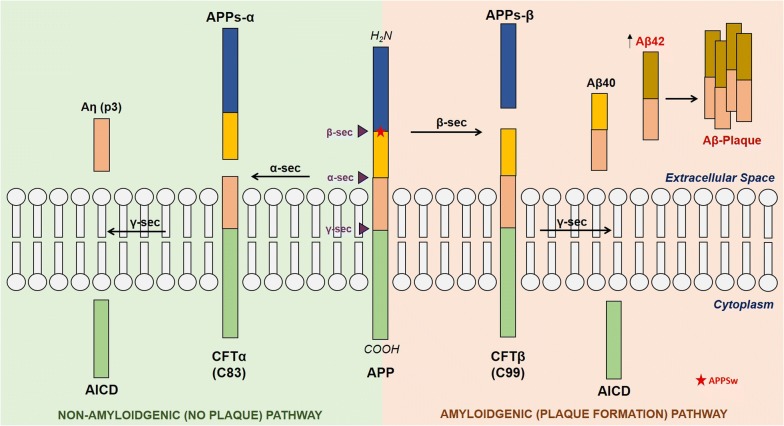Fig. 3.
Overview of Aβ processing. APP can be processed via the α-secretase pathways (non-amyloidgenic pathway) producing the soluble APPs-α fragment and a small p3 fragment. The amyloidgenic pathway utilises β-secretase to produce the soluble APPs-β fragment followed by γ-secretase producing Aβ40 or lower in a much higher ratio than the production of Aβ42. Mutations to PSEN1/2 and APP (such as the Swedish mutation, marked by a red star on APP) often favour the production of the more toxic Aβ42 fragment which forms oligomers leading to the formation of Aβ-plaques.

